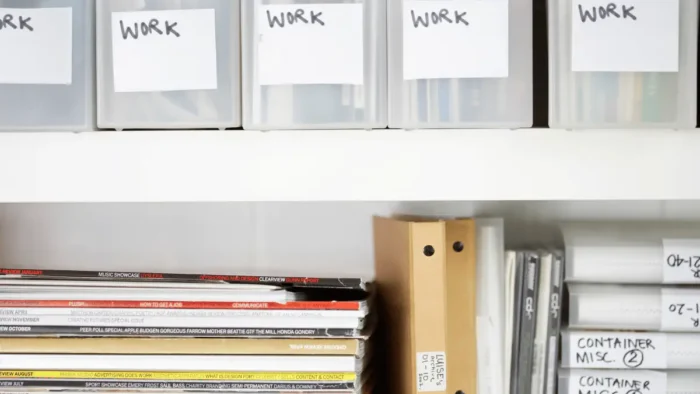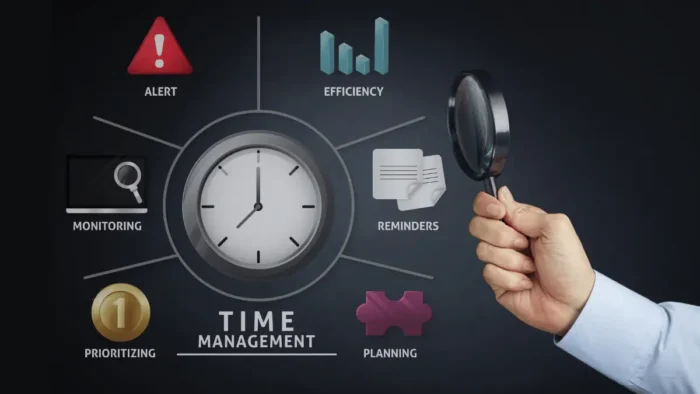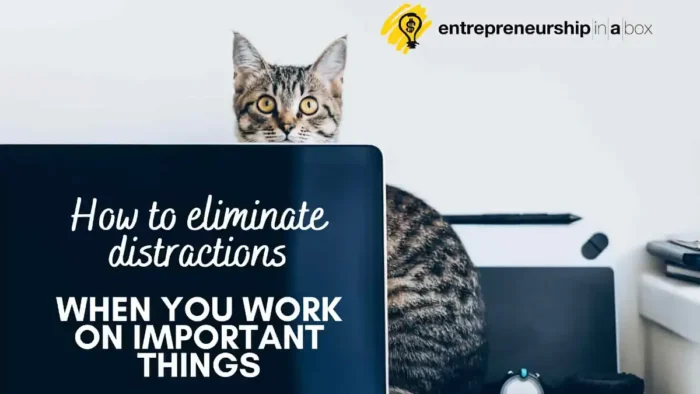Are you a highly organized person or someone who lives disorganized? If you want to become more organized, you will need to invest your time and effort. Invest in organizing yourself now or today, and feel the benefits tomorrow. Do you need such an investment?
One thing is true: if you organize yourself, you will benefit from the system that organizes you. But the benefits will not come today; they will come tomorrow.
The truth is that productivity and profitability are highly correlated, and it all starts with the right organization of people to be more productive.
Today, there are so many tools, techniques, and philosophies, each promising to help you organize and improve your efficiency. The question is what to use. But in my experience, the more important thing is not to use the tools, techniques, or philosophies. All of them are logical things that we can do.
The more important thing is to have a system combining the best tools, techniques, and philosophies according to your needs and organizational style.
So, in this guide, I will provide you with a blueprint for attacking both the systemic chaos and the personal disorganization that may be holding you back. I will start with some benefits you can experience if you invest in organizing yourself and becoming more organized.
📖 Key Takeaways
- If you succeed in your organizational efforts, you will implement good habits to feel productive with less stress. Also, you will declutter your space and use sticky notes or a to-do list with due dates for each new project to increase your overall productivity.
- There are many techniques, methodologies, and tools for getting organized, and you must select a mix that best fits your organizational style.
- Remember that each change you make must stick or become a vital part of your daily routine. Using the systemizer style, develop systems and processes with manageable steps.
What are the Benefits of Being Organized?
Let’s start with the benefits or why you should organize yourself.
1. You will be a more productive person if you get organized
Organized people know what they must do and how to do that. More importantly, they know the best way how to do what they must do. In such a case, they will succeed in accomplishing all critical things for their small business.
Their knowledge of how to do the right things in the right way will ensure they quickly finish everything they need to do. They will be more productive people. Because they are more productive people, they can do more things better than anyone else.
2. You can better control your time and focus on important tasks
Organized persons use different time management principles to be more productive and focus on important tasks. However, managing time is not a simple task in today’s environment of an average person.
Organizing yourself means knowing what you must do, when you must do it, and how much time you will need to do it. It’s simply the heart of each organizing process.
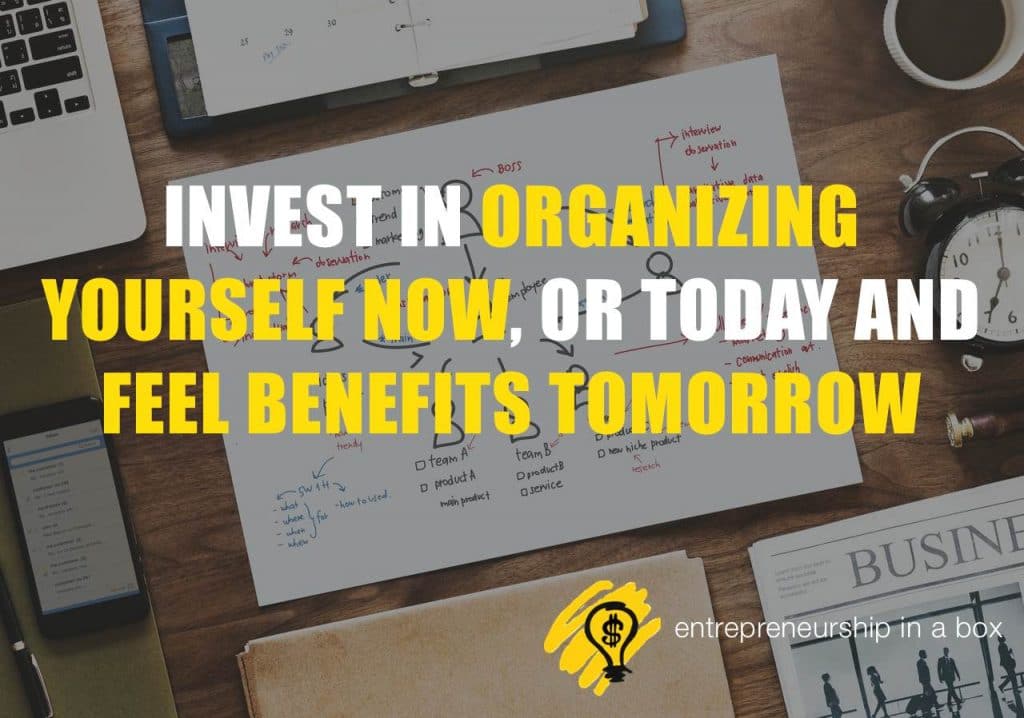
3. You will process every idea you have if you get organized
If you are organized, you will know what ideas are worth for you and with which priority you will need to implement them.
Better organization of yourself will ensure that you will not forget your ideas, they will always be there for you at the right moment when you need it.
4. You will be more focused on the right things if you get organized
Better-organized persons are more focused on the things that are important to them. You can’t, and you don’t need to focus on everything but on things that make you happy and bring you closer to your success.
5. You can reduce stress level
The chaotic world is a stressful world. If you want to decrease stressful situations in your work or life, you must bring order to the messy world around you. You must organize your day, week, month, or year.
6. You will waste less time
If you are more organized, you will spend much time on more important things without losing time on things that are unimportant to you. You will not waste your time.
7. You will less procrastinate
The most significant causes of procrastination are your fear of doing something and poor management of your work tasks when you start doing something.
If you organize yourself, your knowledge, experience, and wish for success will remove fear, enabling you to start doing what you need to do to succeed.
On the other hand, a better organization will mean that you are prepared to manage your projects or daily activities.
8. You will work in less distracted work environment
A messy environment often leads to a distracted mind. When everything is in order and organized, your mind can focus on the task at hand without being pulled in different directions.
9. You can achieve a better work-life balance
Organizing yourself means having control over your time and priorities, allowing you to spend more quality time with family and friends outside of work. Organized life and working habits are important for a balance between work and personal life that will bring you happiness and well-being.
10. You will do your job with better quality
If you better organize your work, with no doubt, the work you will finish will be of better quality.
Understand Your Personal Organizational Style
Before you do anything related to implementing good organization, you must first understand which organizational approach will resonate most with your work style.
People often procrastinate when implementing organizational efforts because they try to adopt a tool, technique, or method that is available on the market and simply expect to get the results immediately.
I have seen some entrepreneurs force themselves into a system that doesn’t align with their natural habits. And it is really important to find something that will support the best way to do things.
Types of Organizational Styles
You can significantly improve your productivity if you identify your personal, organizational style or combination of styles that complement your workflow. Here are some common organizational styles that might resonate with you:
- Minimalist style. If you prefer simplicity in organization, using few tools or systems to keep track of tasks and projects, then you already utilize this style. With this style, you focus on decluttering both your physical and digital spaces.
- Scheduler style. If you rely in large part on calendar tools and scheduling software, a to-do list to manage time and individual tasks, and if you prefer having a clear view of what needs to be done and when you also use this style. For example, you find satisfaction in creating and checking off lists for daily tasks, projects, and goals.
- Visual organizer. Suppose you use visual representation tools like Kanban boards, mind maps, or color code to organize your thoughts and tasks and understand your workflows and priorities better. In that case, this is the style you also appreciate.
- Digital integrator. You prefer this style if you use many digital tools and platforms (task managers for important tasks, cloud storage solutions, and project management apps) to create a cohesive system adjusted to your own needs.
- Bullet journaler. As a bullet journaler, you prefer writing things to organize yourself. You use a notebook to combine scheduling, reminders, and to-do lists with all the things you must do, prioritize tasks, brainstorm, and other tracking records.
- Systemizer. The last one, I call a systemizer style, is for persons establishing and following detailed systems and processes with actionable steps for organizing work and life using various methods and tools to create a logical structure for doing different things.
As you can see, you probably already use one or a combination of different styles in most cases.
For example, I have worked with entrepreneurs with great minimalist, scheduler, and visual organizer styles. However, they still struggled to achieve close to perfect organization for themselves because they lacked a systemizer style.
Why? It is because they integrate different things from different style, but without systematic approach or following detailed systems to do the work at the best possible way. In such a way, their changes don’t stick as a daily routine and quickly they come back to the previous situation.
How do you define the right mix of styles?
Here are some questions that will help you to understand your organizational style better:
- What are my organizational skills? The most important thing is to start with your organizational skills, or what you know, what your experience is, and what your skills are to become an organized person.
- How do I motivate myself to be organized? Motivation is one of the biggest foundations for improving your organizational skills and getting organized. What motivates you to do something in this matter? How do you use motivation?
- What is the perfect organization for me? Simply, this question require you to visualize the perfect organization for yourself. What do you wantOr a less distracted environment? to achieve? Is it to spend less time finding things for your work? Or, less distracted environment? Or, combination of different things related to your working process and work environment?
- What am I doing to organize myself? Now, what is your current organizational process? How do you try to bring order in your messy environment?
- What productivity tools help me organize myself? There are many tried-and-tested tools, philosophies, and methods out there, such as Kanban boards, bullet journals, GTD systems, and the simple art of list-making. Whatis the best fit for you?
Answering these questions, you will learn more about yourself from what you know, what you do, how you process information, how you handle commitments, and how you prefer to visualize your work.
Remember that the right organizational style will feel intuitive and should provide a sense of control and clear progress you make.
How to Improve Your Organizational Skills?
Now that you have a better understanding of your personal organizational style, let’s discuss some practical tips on how to improve your skills and become more organized in your work:
1. Start with decluttering your physical and digital space
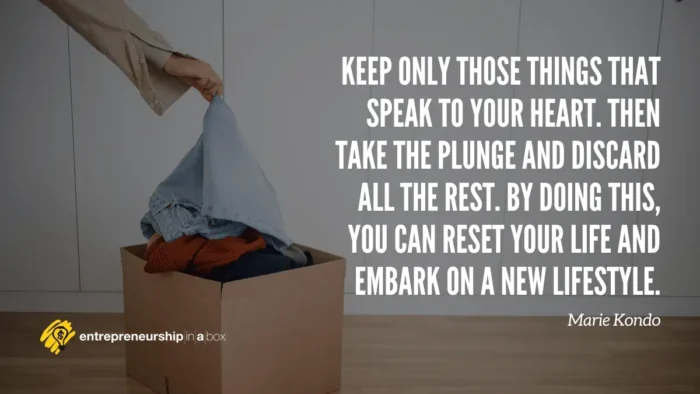
First, you can start with decluttering, which comes from a minimalistic style.
Why is this important? You can invest in different means, like to-do lists or other time management tools, but if you spend your time finding the right tool for your work or finding an important email from last year or a file you know you have on your computer, what you use will not help you. They will only automate the mess and clutter in your physical and digital spaces.
So, take the time to declutter both your physical and digital spaces on a regular basis. This will help you stay focused, reduce distractions, have a clear idea what you need and what you don’t need and increase productivity.
One great approach you can use for this purpose is 5S methodology that comes from lean production, or Toyota Production System to clean your physical and digital clutter.
Also, every time when you decide to bring something inside your office or home, ensure it is only what you really need and have a purpose to simplify your life or work.
2. Practice prioritization of tasks and goals every day
Why do you need to lose your time on trivial or nonimportant things in your work and life? You must use your organizational style to create a clear view of what needs to be done and when.
I know that you have so many tasks to do each day. But, thinks again are they something important and urgent for exactly that day. So, you can prioritize your tasks and goals based on urgency, importance, or some other your own personal preference.
Eisenhower matrix, or time management matrix, is a tool that can help you in this matter. Learn to identify the tasks that bring the most value, schedule them, and work on that intentionality first.
You can follow this guide on how to use the Eisenhower matrix with examples.
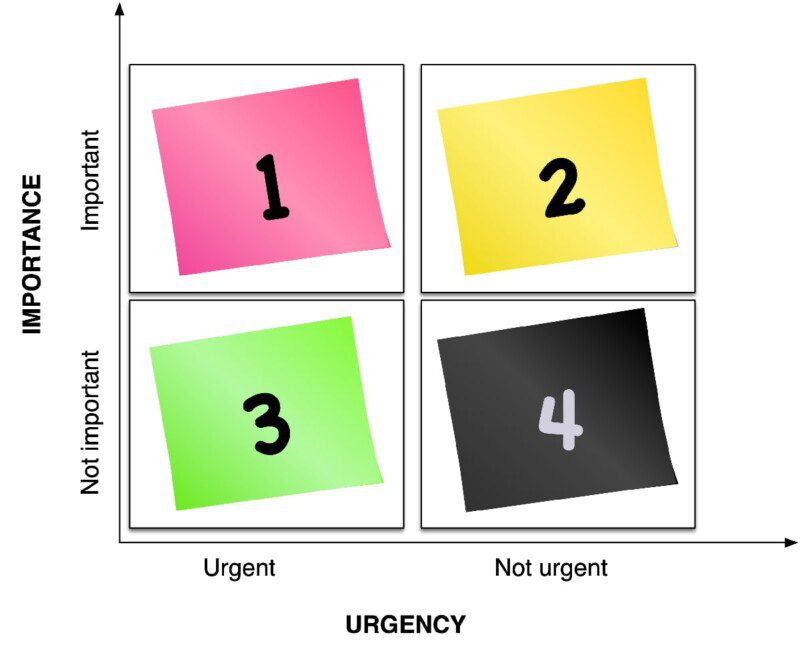
4. Eliminate or reduce all possible distractions
Distractions are the main enemy of productivity and organization. They can be external, such as noise or office interruptions, or internal, such as your own thoughts and emotions, or digital, such as notifications on your smartphone.
So, the most organized people identify and eliminate any possible distractions in their work environment to streamline work that is important to them.
For example, you could find a quiet place to work, use noise-canceling headphones, or set specific times to check and respond to emails.
Remember that it is important for you to ensure that your work environment will allow you to use one-task-at-a-time approach for the most efficient way of doing things.
Follow these 14 steps to eliminate workplace distractions.
5. Experiment with different philosophies, methods, and tools
Don’t be afraid to try out different organizational methods and means to find what works best for you. Here, I would like to list some recommendations about what you can learn, or try and check if they work for you.
Remember, you don’t need to stick with only one technique, but you can combine them according to your own needs.
KonMari Method. This method, introduced by Marie Kondo, challenges you to declutter your space by keeping only those items that “spark your joy”. It emphasizes tidiness in your physical space, which translates to clarity and organization in your mind and life.

Getting Things Done (GTD). A productivity methodology described by David Allen. It’s a five-step process that involves capturing, clarifying, organizing, reflecting, and engaging with your tasks and projects.
GTD encourages you to move tasks and projects out of your mind by recording them externally and then breaking them into actionable work items.
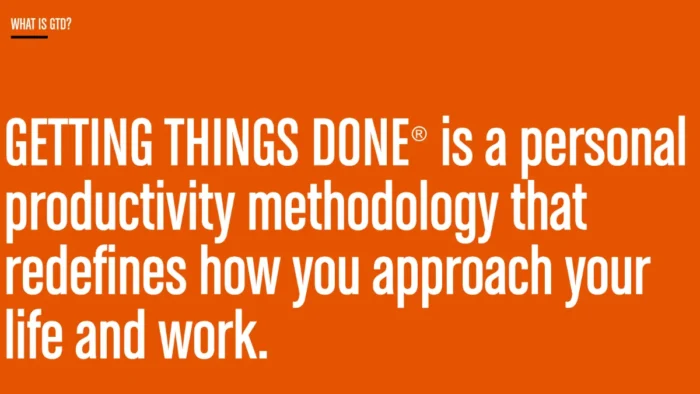
Pomodoro Technique. Developed by Francesco Cirillo, the Pomodoro technique uses a timer to break work into intervals, traditionally 25 minutes in length, separated by short breaks. It’s excellent for managing your work sessions and ensuring you remain focused and productive.
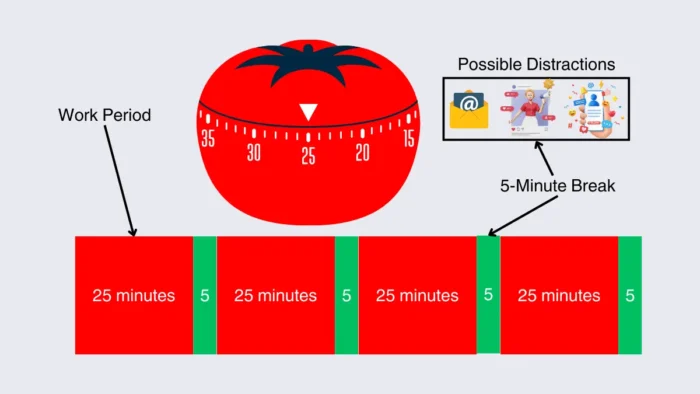
Kanban Boards. This technique like 5S we mentioned previously come from Toyota’s production system, and uses boards and cards to visualize work and maximize efficiency. Each card represents a task, and moving them across columns on the board helps track progress from start to finish.
Bullet Journaling. Ryder Carroll developed this customizable organization system that combines planner, diary, and to-do list elements. It allows you to track your personal and professional life. Its flexibility and creativity make it popular with many who seek an analog organization tool.
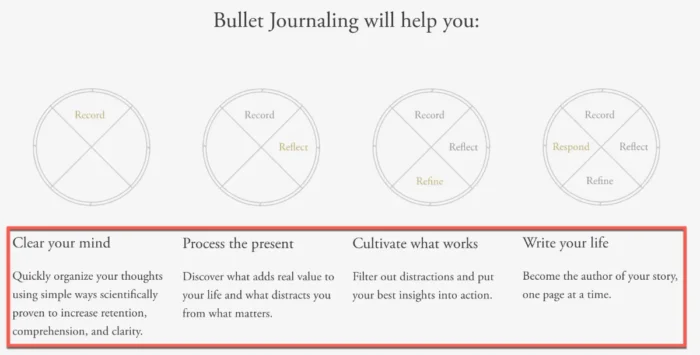
Time Blocking: This method requires you to divide your day into blocks of time, each dedicated to a specific task or group of tasks. Time-blocking is a highly effective way to control your time and ensure that you allocate enough for each of your priorities.
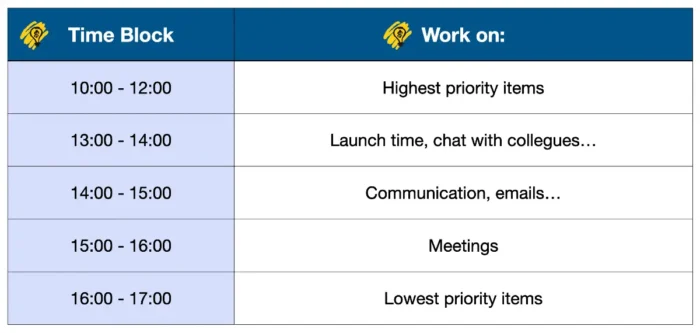
Mind Mapping is a tool for visually brainstorming and organizing thoughts and ideas. It can also be used to plan projects, consolidate information, solve problems, and more.
Here is an example of a mind map I used to organize a research paper my colleague and I were engaged in researching and preparing.
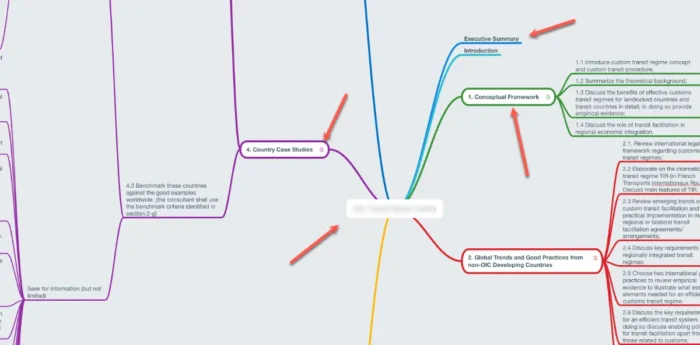
As you can see, each chapter of the research report has its own node, but notes and documents are attached that will help conduct research for specific chapters required from the ToR (Terms of Reference). This is a much better organization than outlining because it visually represents the flow of the report.
These techniques and tools, in addition to the Eisenhower matrix and 5S methodology I have mentioned previously, and their combination in your daily routines will help you bring order and organization into your life.
6. Use digital tools
Suppose you are a digital integrator (and who is not today). In that case, you must use different productivity tools such as task manager or to-do list, cloud storage solutions, and project management apps to create a system that works for you.
Many tools on the market, such as Trello, Asana, and Todoist, have received high praise for their ability to adjust to different working styles.
I am using OmniFocus for my to-do list app, but I have also used Things in the past, and both of them are great time management tools.
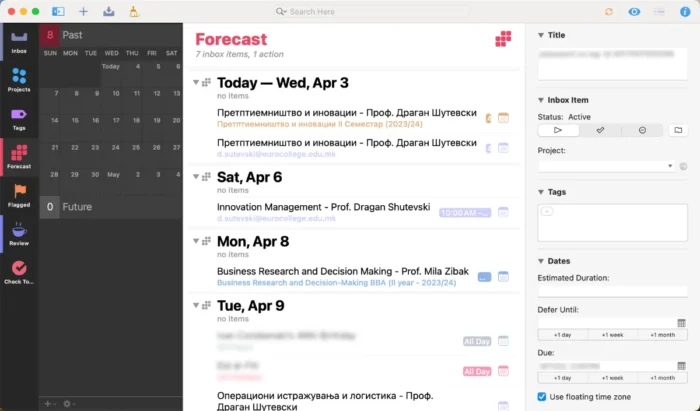
7. Create a routine
Incorporate your mix of organizational styles into your daily routine to make it a habit. And what is the better way to create a routine than using systemizer organizational style to develop a systems that can be followed each day.
Remember that the systems will help you stay organized even when things get messy.
For example, if you establish a morning or evening routine for tidying up your space, you can have a relaxing effect. If you know each day what is most important to do, you can easily focus only on those things and eliminate all possible distractions.
Remember, improving your skills to organize yourself takes time and effort, but with the right mix of styles, you can become a more organized and productive person.
8. Celebrate Small Wins
Finally, remember to celebrate your small wins along the way. Organizing and managing yourself is not easy. It requires investing time and effort.
So, make sure to recognize and reward yourself for accomplishing small tasks, getting more space in your working environment, or making progress toward your goals.
This will boost your motivation and keep you on track to becoming a master at self-management. Overall, being
Conclusion
Organizing your life and business is not about sticking to some incidental efficiency standard—it’s about creating the space and structure you need to flourish.
Whether you’re a startup founder, a freelancer, or a manager in a corporation, the lessons of organization and productivity are the same.
With careful planning, the right tools, and a commitment to the long game, you can bring order to chaos and transform your productivity into profitability.

